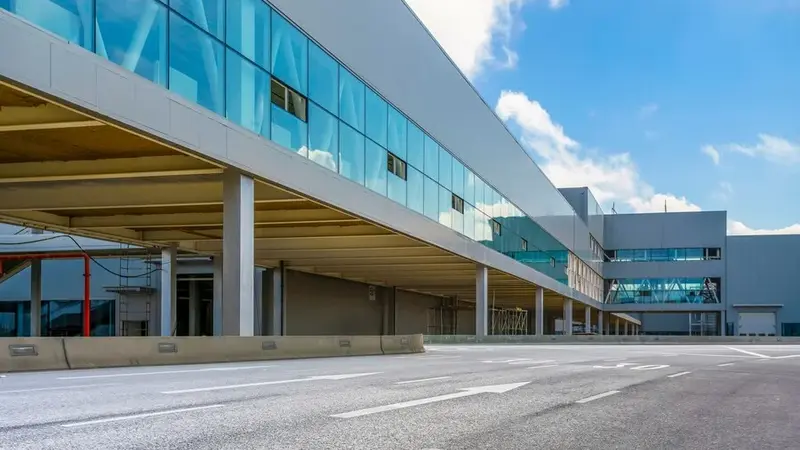As industries evolve and consumer demands shift rapidly, businesses must adapt quickly to stay competitive. One area where this need for adaptability is particularly evident is in warehousing. Traditional brick-and-mortar warehouses often entail lengthy construction times and significant upfront investments. However, the emergence of prefab warehouse buildings has revolutionized the landscape, offering a solution that expedites operational setup without compromising quality. This article talks about the phenomenon of instant warehousing and explores how these structures for warehouses accelerate operational setup for businesses across various sectors.
Introduction to Instant Warehousing
Instant warehousing refers to the concept of rapidly deploying warehouse facilities using prefabricated building components. Regular building means putting things together where you want them. Prefab warehouses are made somewhere else and then brought to where you want them to be. This streamlined approach significantly reduces construction timelines and enables businesses to establish operational facilities in a fraction of the time required for conventional construction projects.
The Rise of Prefabricated Warehouse Buildings
The adoption of prefab buildings for warehouses has surged in recent years, driven by the need for swift and cost-effective solutions to meet evolving business requirements. Manufacturers, retailers, e-commerce companies, and logistics providers are among the many industries leveraging prefab warehouses to enhance their supply chain operations. Because they’re built in sections, these warehouses can be easily adjusted to fit different storage requirements, making them useful for many different purposes.
Rapid Deployment: From Order to Operation
Traditional warehouse construction projects can take months or even years to complete, from the initial planning stages to final occupancy. In contrast, prefabricated warehouse buildings offer a much faster turnaround time, with some facilities being operational in a matter of weeks. This accelerated deployment enables businesses to react swiftly to market demands, capitalize on growth opportunities, and minimize downtime during facility expansion or relocation.
Integration of Technology
Modern prefab buildings for warehouses are not just simple storage spaces. They are equipped with advanced technologies to enhance efficiency and productivity. Automated storage and retrieval systems, IoT-enabled sensors, and robotics are among the technologies integrated into these facilities to optimize inventory management, streamline logistics processes, and improve overall operational performance.
Streamlining Operations with Prefab Warehouses
The streamlined construction process of these warehouses accelerates operational setup and contributes to smoother ongoing operations. With standardized manufacturing processes and quality control measures, they offer consistent quality and reliability, minimizing the risk of construction delays and cost overruns. The modular nature of these structures facilitates easier maintenance and repairs, further reducing downtime and operational disruptions.
Considerations
While these buildings offer many advantages, there are also considerations to keep in mind. Factors such as site selection, zoning regulations, transportation logistics, and integration with existing infrastructure can impact the feasibility and effectiveness of prefab construction projects. Moreover, companies need to carefully consider what they need and do proper research to ensure that prefab options match their long-term goals.
As businesses continue to prioritize agility, efficiency, and innovation, the demand for instant warehousing solutions is expected to grow. Prefab warehouse buildings represent a paradigm shift in the construction industry, offering a faster, more flexible, and cost-effective alternative to traditional building methods. By embracing prefab technology, businesses can accelerate their operational setup, adapt to changing market conditions, and stay ahead of the competition. Visit World Wise Mag for more details.
